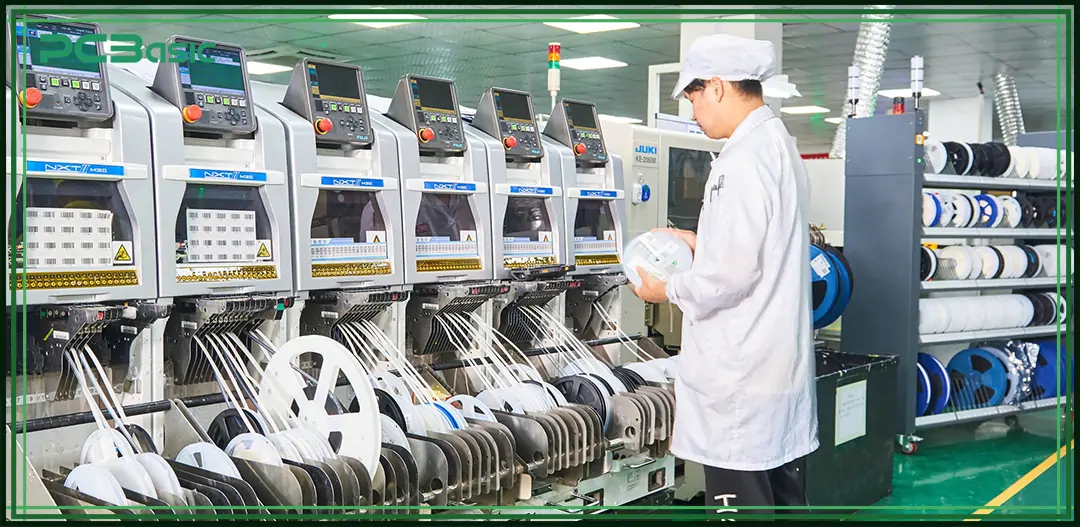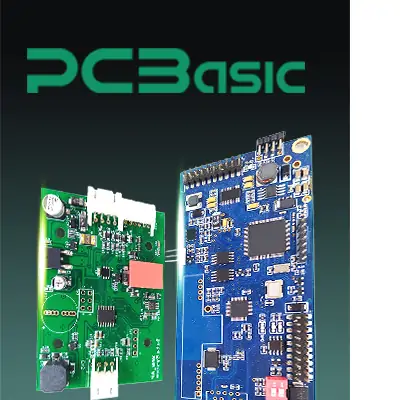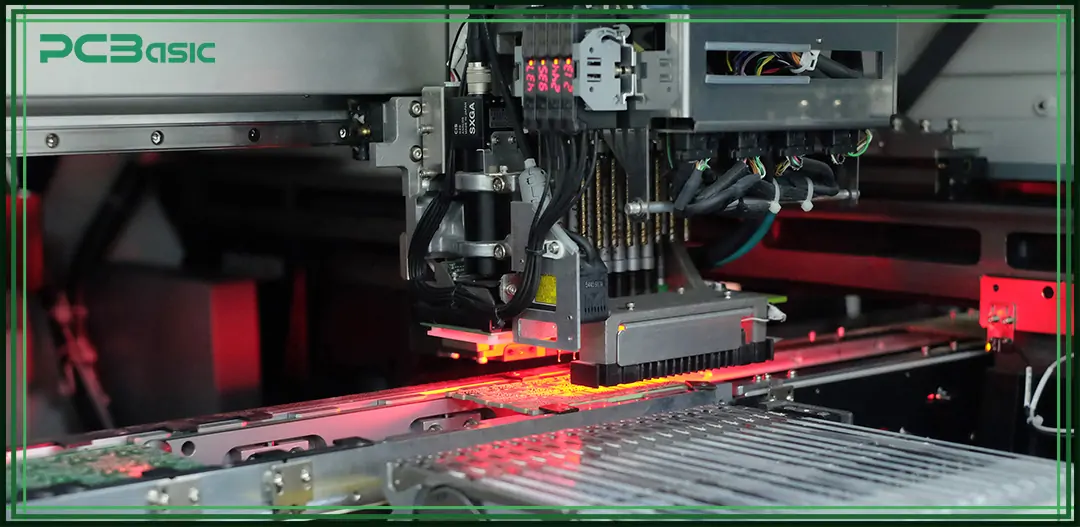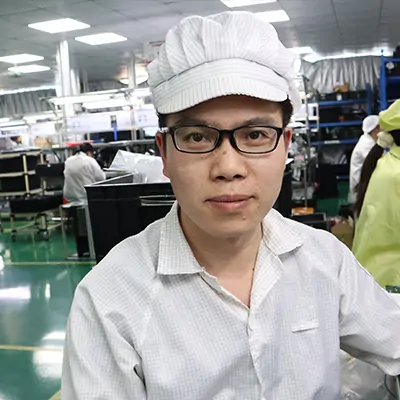Global high-mix volume high-speed PCBA manufacturer
9:00 -18:00, Mon. - Fri. (GMT+8)
9:00 -12:00, Sat. (GMT+8)
(Except Chinese public holidays)
Global high-mix volume high-speed PCBA manufacturer
9:00 -18:00, Mon. - Fri. (GMT+8)
9:00 -12:00, Sat. (GMT+8)
(Except Chinese public holidays)
HomePage > Blog > Knowledge Base > Ultimate Guide to Pick-and-Place Machines in SMT and PCB Manufacturing
A pick-and-place machine is a vital component in the process of Surface Mount Technology (SMT). Its primary function is to automatically position and attach surface-mount devices (SMDs) to a printed circuit board (PCB). By utilizing robotic arms, often called pick-and-place heads, these machines efficiently handle various electronic components like capacitors, resistors, and integrated circuits. The high-speed operation of a pick-and-place machine allows for thousands of components to be placed per hour with exceptional precision, making it indispensable in electronic manufacturing.
A pick-and-place machine is more than just a component of an SMT machine line—it is the core of any high-performance surface mount technology machine workflow. Often integrated within complete SMT equipment solutions, a pick-and-place system operates with robotic precision to place electronic components on circuit boards. This automated pick-and-place approach is essential for modern electronics assembly and central to maintaining competitive throughput, accuracy, and repeatability.

In today's fast-paced electronics industry, the demand for efficiency, accuracy, and scalability is higher than ever. The implementation of a pick-and-place system significantly reduces labor costs and assembly time while enhancing quality. Manual assembly methods are limited in speed and consistency, whereas a dedicated SMT machine continuously performs with high accuracy. You can see this impact in the assembly lines of smartphones, laptops, and various consumer electronics, where speed-to-market is crucial.
Whether you're using a compact PCB pick-and-place machine for prototyping or a multi-head high-speed pick-and-place system for mass production, the efficiency of your SMT pick-and-place machine determines your assembly speed and final product quality. These machines serve as indispensable tools across all levels of PCB manufacturing equipment.
Several key components and systems enable the effective operation of a pick-and-place machine. These include:
• Robotic Arm: The central component that picks components from feeders and places them on the PCB.
• Feeders: Devices that supply components to the pick-and-place head, often arranged in tape reels or trays.
• Conveyor Belts: Move PCBs through various stages of the assembly process.
• Vision Systems: Cameras that inspect components and confirm their placement accuracy.
• Nozzles and Suction Cups: Technologies that facilitate the gripping and manipulation of SMDs.
Understanding these components enhances your appreciation of how a pick-and-place machine streamlines electronic assembly and contributes to the overall effectiveness of your SMT equipment lineup.
Rapid placement machines, often referred to as chip shooters, are designed for high-speed assembly processes. These pick-and-place machines excel at placing smaller, less complex components like resistors and capacitors. The design typically includes multiple nozzles mounted on a rotating turret, enabling them to quickly pick components from feeders and place them on the board. You can expect these SMT pick-and-place machines to achieve placement rates of up to 53,000 components per hour.
Despite their speed, chip shooters may lack the precision required for larger or more delicate components. Therefore, they are most effective when used in conjunction with other pick-and-place systems.
To address the need for accuracy, precision placement machines are employed. These pick-and-place systems often incorporate advanced verification cameras and fine-motion adjustments to achieve placement precision within fractions of a millimeter. You’ll find they can handle more complex components, ensuring that products meet the strictest quality standards.
Typically, precision machines avoid turret-mounted nozzles in favor of a gantry-supported design, allowing for greater flexibility in component handling. Their slower speed compared to chip shooters contrasts with their ability to accurately place a wider range of components, making them a staple in high-precision SMT equipment setups.
In recent years, all-in-one modular machines have become increasingly popular for their versatility. These SMT machines combine the functionalities of both rapid and precision placement machines, allowing you to adapt to different production requirements seamlessly. With multiple interchangeable heads and advanced software integration, these automated pick-and-place machines can perform various tasks ranging from high-speed pick-and-place assembly to precise placements of irregularly shaped components.
The emergence of modular pick-and-place automation equipment represents an evolution in SMT machine design, providing manufacturers with a greater degree of operational flexibility and productivity.

To understand the inner workings of a pick-and-place machine, you need to consider the entire pick-and-place automation equipment ecosystem. At the start of the process, SMT equipment feeds components from reels or trays into the system. The pick-and-place head—equipped with nozzles and controlled by software algorithms—then moves rapidly to grab the correct component using vacuum suction and places it accurately on the PCB based on design files and camera verification.
In high-volume settings, automated pick-and-place machines rely on vision systems and precision motion control to place tens of thousands of parts per hour with minimal error. These pick-and-place systems are synchronized with other PCB manufacturing equipment, such as reflow ovens and inspection machines, forming a seamless production line optimized for both speed and quality.
Modern SMT pick-and-place machines come equipped with advanced features that support rapid production cycles and exceptional placement accuracy. Among the most notable features are:
• High speed pick-and-place capabilities exceeding 100,000 CPH (components per hour)
• Intelligent pick-and-place system vision software for optical recognition and alignment
• Modular design for scalability and maintenance-friendly operation
• Multi-nozzle heads that handle a wide component range from 0201 passives to large QFNs and BGAs
• Compatibility with various SMT equipment and easy integration into existing PCB manufacturing equipment setups
These attributes make pick-and-place machines the cornerstone of any automated SMT line. From startup labs to global production lines, choosing the right SMT machine means investing in speed, precision, and flexibility.
 About PCBasic
About PCBasic
Time is money in your projects – and PCBasic gets it. PCBasic is a PCB assembly company that delivers fast, flawless results every time. Our comprehensive PCB assembly services include expert engineering support at every step, ensuring top quality in every board. As a leading PCB assembly manufacturer, we provide a one-stop solution that streamlines your supply chain. Partner with our advanced PCB prototype factory for quick turnarounds and superior results you can trust.
The operation of a pick-and-place machine begins with the feeding of components into the system. These components can be supplied through tape and reel feeders, trays, or bins. Once positioned on the PCB, the robotic arms utilize nozzles to pick up the components. The precise feeding and placement process is crucial and allows for automated pick-and-place assembly of complex PCBs.
Usually, the conveyor belt transports the blank PCBs through various stages, from assembly to inspection. By optimizing this flow, you’ll greatly enhance production efficiency across your SMT equipment line.
Vision systems play a pivotal role in modern pick-and-place machines. These systems use high-resolution cameras to identify components on the feeders and confirm their correct placement on the PCB. If there are any discrepancies in the location or orientation of a component, the vision system can quickly correct them, ensuring minimal error rates.
This feedback loop significantly enhances the reliability of the pick-and-place process, allowing manufacturers to maintain high standards of quality control and consistency.
Suction cups and specialized nozzle designs are fundamental technologies in a pick-and-place system. They enable the precise handling of components without causing damage. The use of vacuum technology allows the SMT pick-and-place machine to pick up and position components accurately on the PCB, accounting for variations in component shape and size.
Different nozzle types can be adapted to meet the needs of various components, ensuring versatility in the pick-and-place automation equipment. With advanced nozzle technology, you can expect improved grip and reduced instances of component misplacement.

Technological improvements have significantly increased the speed and accuracy of pick-and-place machines. Modern systems can achieve placement rates exceeding 200,000 components per hour, far surpassing the capabilities of previous generations. These advancements allow you to scale production without sacrificing quality, meeting the growing demands of industries reliant on high-speed pick-and-place strategies.
In the current economic climate, adaptability has become key to changing production needs. Many manufacturers are shifting their focus from large-scale production runs to small-batch manufacturing. As a response, newer pick-and-place machines have incorporated features that facilitate rapid changeovers, allowing for the efficient handling of diverse product lines. This flexibility makes pick-and-place systems suitable for the evolving demands of modern electronics assembly.
Innovations in software play a significant role in optimizing the performance of pick-and-place machines. Advanced process management software allows for real-time monitoring and adjustments, ensuring that the SMT pick-and-place machine runs smoothly. The integration of machine learning algorithms can further enhance operational efficiency by predicting maintenance needs and identifying optimization opportunities.
You might also notice the increasing integration of cloud technologies in SMT equipment, allowing for better resource management across the entire production line. This capability ultimately ensures that your pick-and-place system remains competitive in a rapidly advancing industry.
The evolving landscape of electronics manufacturing has made the role of pick-and-place machines increasingly significant. These machines not only enhance speed and accuracy in assembly processes but also offer a versatile solution to meet the demands of modern production environments. Their key features, ranging from advanced vision systems to software innovations, ensure that you can produce high-quality electronic assemblies efficiently using reliable SMT equipment.
In conclusion, investing in a robust pick-and-place system is a strategic move for any organization seeking to improve its assembly processes. Whether you’re operating on a large scale or adapting to smaller production runs, the capabilities of pick-and-place machines provide essential support in navigating the complexities of today’s electronics assembly landscape. Embracing these technologies—from high-end automated pick-and-place systems to scalable PCB pick-and-place machines—can lead to improved operational efficiency and higher-quality products, meeting both your production needs and market expectations.

Assembly Enquiry
Instant Quote
Phone contact

+86-755-27218592
In addition, we've prepared a Help Center. We recommend checking it before reaching out, as your question and its answer may already be clearly explained there.
Wechat Support

In addition, we've prepared a Help Center. We recommend checking it before reaching out, as your question and its answer may already be clearly explained there.
WhatsApp Support

In addition, we've prepared a Help Center. We recommend checking it before reaching out, as your question and its answer may already be clearly explained there.
